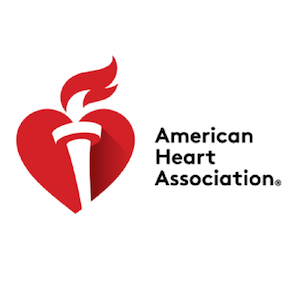Article
American Heart Association Highlights Need for Comprehensive Post-Stroke Management
Author(s):
A new statement from the AHA and American Stroke Association stressed the need to address gaps in care that may lead to high risk of stroke recurrence.

A new scientific statement on the primary care of adult patients after stroke provided a guideline for goal-directed, patient-centered care.
The statement, “Primary Care of Adult Patients After Stroke,” was released by the American Heart Association (AHA) and the American Stroke Association (ASA).
Summary
The statement highlighted the need for comprehensive post-stroke management, including engaged caregivers and family members in supporting the patient.
In addition, it stressed the need for an earlier post-stroke primary care appointment, which may reduce hospital admission and address gaps in care that may lead to high risk of stroke recurrence.
The complexities of stroke were also highlighted, citing approximately 800,000 adults in the US will have a new stroke each year, while 10% will die within 30 days.
Further, data show by 90 days after stroke, new-stroke related disability developed in 10% of younger adults to 30% in adults aged >65 years.
The statement noted screenings should assess new or chronic risk of recurrent stroke, including high blood pressure, high cholesterol, diabetes, atrial fibrillation and blockage in carotid artery, as well as complications including anxiety, depression, and cognitive impairment.
Walter N. Kernan, MD, chair of the statement writing group, professor of medicine at Yale University School of Medicine, said the new statement affirmed the new role of the primary care professional in the care of people with stroke.
“Primary care professionals can ensure consistent and comprehensive care for the full needs of patients, including coordinating any additional care or services patients may need from community services providers or from subspecialty health care providers,” Kernan said.
Data show the risk of recurrent stroke will reach 8% in the first year following an ischemic stroke, while the annual risk after the first year is 2%, nearly 4 times higher risk than a person without prior stroke.
The guidelines mentioned that while most patients will have a stroke due to cardioembolism, large-vessel disease, or small-vessel disease, it may be important to consider other causes including arterial dissection, vasculitis, or sickle cell disease.
The statement indicated the first step in outpatient primary care is to confirm the cause of stroke, while diagnostic tests that have not been completed should be prioritized, including carotid imaging and cardiac rhythm monitoring.
The cause of stroke remains uncertain for 30% of patients, Kernan and colleagues noted.
Recommendations
The statement included the class 1 treatment recommendations from the AHA/ASA.
Proven treatments in the prevention of recurrent vascular events included carotid revascularization for carotid stenosis, anticoagulation for atrial fibrillation, BP lowering, statin therapy, and anti-platelet therapy.
Further, lifestyle improvements, diabetes management, and weight optimization are recommended as Class 1 due to evidence of reduction of risk factors for stroke, rather than prevention of recurrent stroke.
The importance of hypertension management was observed, citing 2 trials that showed blood pressure lowering following stroke reduced the risk for stroke recurrence by 30%.
They provided guidance on diagnostic evaluation, including imaging of the carotid artery for anterior circular stroke events and ECG to screen for atrial fibrillation (AF).
Next, they discussed vascular risk factor management to recommend and facilitate optimal lifestyle practices, as well as treat hypertension to a goal of <130/80 mm Hg.
The statement included additional recommendations for management of large-artery atherosclerosis, such as prescribing 325 mg/d aspirin for patients with stroke related to 50% - 99% intracranial stenosis.
In addition, guidance on cardioembolism included prescribing an oral anticoagulation for AF or flutter unless contraindicated and recommended warfarin over novel oral anticoagulants.
Further, patient behavior guidelines included behavior change to improve stroke literacy, lifestyle, and medication adherence.
Another guideline included health equity to address social determinants of health, including literacy level, language proficiency, medication affordability, food insecurity, housing, transportation, in managing stroke risk factors.
Lastly, guidelines included antithrombotic medications, recommending non-cardioembolic ischemic stroke or TIA, aspirin 50–325 mg, clopidogrel 75 mg, or combination aspirin 25 mg/dipyridamole 200 mg twice daily.
Reaction
In commentary accompanying the statement release, Deborah A. Levine MD, MPH, Department of Neurology and Stroke Program, University of Michigan, noted the lethality of recurrent stroke.
“Recurrent strokes are more lethal, disabling, and costly than first strokes,” Levine said. “While up to 80% of recurrent strokes are preventable, many individuals with stroke have uncontrolled, modifiable risk factors, increasing their risk for recurrent stroke.”
She noted the risk factors of hypertension and tobacco smoking are increasing in Americans with stroke.
Patients with stroke are also associated with accelerated cognitive decline, with Levine noting the guidelines were justified in recommending cognitive impairment screening to reveal “cognitive deficits.”
Levine also observed the need for improvement in access to high-quality care provided in the statement for all individuals at risk of stroke.
“Still, we need policy and health system-level interventions to ensure that all individuals with stroke get high-quality care and reduce the burden on individual primary care providers,” Levine said. “Like other individuals with disabilities, individuals with stroke frequently have problems accessing and getting high-quality health care.”
The full-text of the AHA statement is available here.





